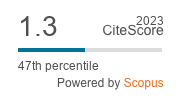A Comparative Analysis of Key Integration Blocks
DOI:
https://doi.org/10.18778/1508-2008.27.02Keywords:
integration block, economic gravity, stage of integration, economic coefficientAbstract
Why is integration progressing successfully in some parts of the world but not in others? Why are only some integration blocks hugely important for member countries? And why this is not the case globally? This article provides a comparative analysis of international economic structures, aiming to identify the factors that contribute to the validity and effectiveness of integration.
The article examines eight economic blocks: the European Union, the Agreement between the United States of America, the United Mexican States and Canada, the Southern Common Market, the Association of Southeast Asian Nations, the Euroasian Economic Union, the South Asian Association for Regional Cooperation, the African Union, and the Regional Comprehensive Economic Partnership. We take into account five stages of integration: free trade area, customs union, single market, economic union, and monetary union. To understand the progress of integration, one must consider a number of developments and indicators. The coefficient of economic gravity, which we describe in this paper, is a convenient method to find out how important integration structures are for contracting states.
Downloads
References
Bergeijk, P.A.G. van, Brakman, S. (ed.) (2010), The Gravity Model in International Trade, Cambridge University Press, Cambridge.
Google Scholar
Blank, J.E., Clausen, H., Wacker, H. (1998), Internationale ökonomische Integration: von der Freihandelszone zur Wirtschafts- und Währungsunion, Vahlen, München.
Google Scholar
Carlsnaes, W., Risse, T., Simmons, B.A. (2002), Handbook of International Relations, SAGE Publications, London, https://doi.org/10.4135/9781848608290
Google Scholar
DOI: https://doi.org/10.4135/9781848608290
Daimov, R.T. (2008), Modelling international economic integration: an oscillation theory approach, Trafford, Victoria.
Google Scholar
Ekanayake, E.M., Mukherjee, A., Veeramacheneni, B. (2010), Trade Blocks and the Gravity Model: A Study of Economic Integration among Asian Developing Countries, "Journal of Economic Integration", 25 (4), pp. 627–643, https://doi.org/10.11130/jei.2010.25.4.627
Google Scholar
DOI: https://doi.org/10.11130/jei.2010.25.4.627
Hamanaka, S. (2009), The Building Block versus Stumbling Block. Debate of Regionalism: From the Perspective of Service Trade Liberalization in Asia, "Journal of World Trade", 43 (4), pp. 873–891, https://doi.org/10.54648/TRAD2009034
Google Scholar
DOI: https://doi.org/10.54648/TRAD2009034
Hausmann, R., Hidalgo, C., Bustos, S., Coscia, M., Simoes, A., Yildirim, M.A. (2012), The Atlas of Economic Complexity, The Observatory of Economic Complexity, Harvard.
Google Scholar
Hirschman, A.O. (1945), National Power and the Structure of Foreign Trade, University of California Press, Berkeley.
Google Scholar
Jasiński, L.J. (2018), Potencjał i rozwój. Organizacja społeczeństwa i technika a stan gospodarki, Centrum Europejskie Natolin, Warszawa.
Google Scholar
Jasiński, L.J. (2021), Finanse współczesne. Wybrane zagadnienia, Oficyna Wydawnicza Politechniki Warszawskiej, Warszawa.
Google Scholar
Jovanovich, M. (1998), International Economic Integration. Limits and Prospects, Routledge, London.
Google Scholar
Kabir, M., Salim, R., Al-Mawali, V. (2017), The gravity model and trade flows: Recent developments in econometric modeling and empirical evidence, "Economic Analysis and Policy", 56, pp. 60–71, https://doi.org/10.1016/j.eap.2017.08.005
Google Scholar
DOI: https://doi.org/10.1016/j.eap.2017.08.005
Machlup, F. (1977), A History of Thought on Economic Integration, Columbia University Press, New York, https://doi.org/10.1007/978-1-349-03171-9
Google Scholar
DOI: https://doi.org/10.1007/978-1-349-03171-9
McCormick, J. (2014), Understanding the European Union: A Concise Introduction, Macmillan, New York.
Google Scholar
DOI: https://doi.org/10.1007/978-1-137-36234-6
Pinder, J., Usherwood, S. (2013), The European Union: A Very Short Introduction, Oxford University Press, Oxford, https://doi.org/10.1093/actrade/9780199681693.001.0001
Google Scholar
DOI: https://doi.org/10.1093/actrade/9780199681693.001.0001
Shepherd, B. (2013), The Gravity Model in International Trade. A User Guide, United Nations, New York.
Google Scholar
Winters, L.A. (1991), International Economics, Routledge, London.
Google Scholar
DOI: https://doi.org/10.4324/9780203308318
Downloads
Published
How to Cite
Issue
Section
License

This work is licensed under a Creative Commons Attribution-NonCommercial-NoDerivatives 4.0 International License.











